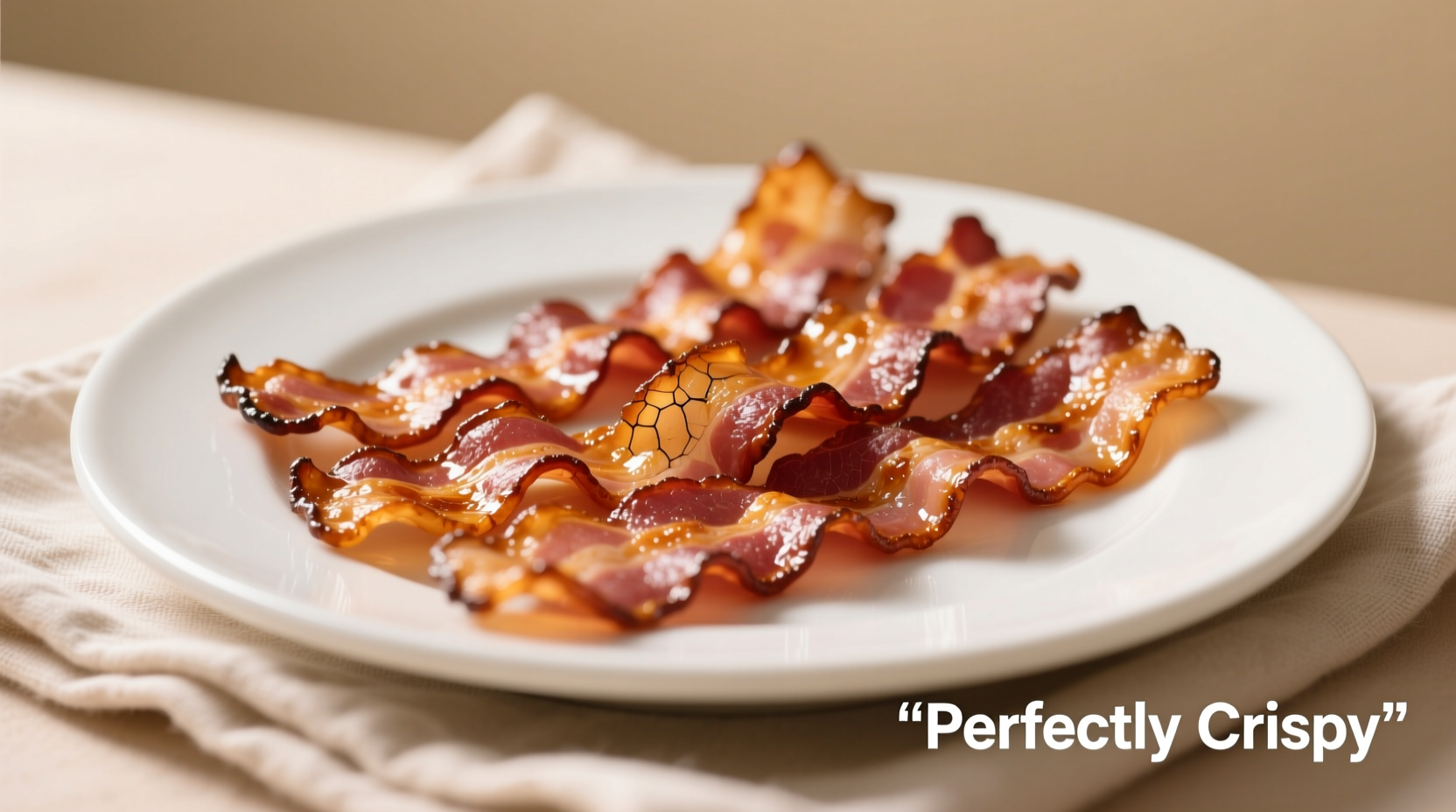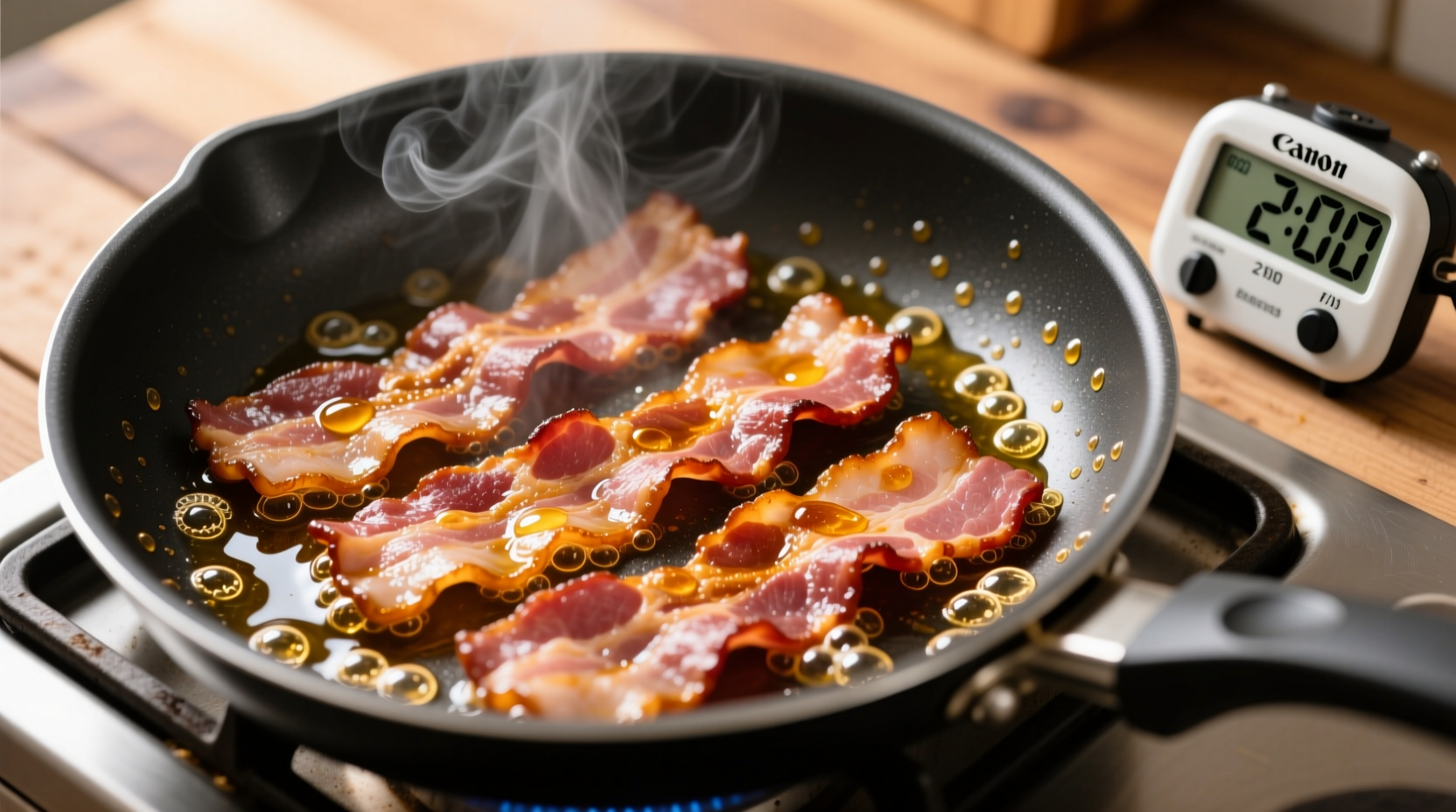The Complete Guide to Perfectly Cooked Bacon: Timing Made Simple
Stop guessing when your bacon is done. Whether you're rushing through a weekday breakfast or preparing a weekend brunch, knowing exactly how long to cook bacon saves time, prevents kitchen disasters, and delivers restaurant-quality results at home. This guide provides precise timing for every cooking method, backed by culinary science and professional chef techniques.
Why Bacon Cooking Time Varies (And How to Master It)
The question "how long does it take to cook bacon" doesn't have a one-size-fits-all answer. Several factors determine your perfect cook time:
- Bacon thickness (regular vs. thick-cut)
- Cooking method (stovetop, oven, air fryer)
- Starting temperature (fridge-cold vs. room temperature)
- Desired crispiness level (chewy to shatter-crisp)
- Equipment used (cast iron vs. non-stick)
Understanding these variables transforms bacon from a breakfast gamble into a consistently delicious achievement.
Stovetop Bacon: The Classic Method
The most common method requires minimal equipment but precise timing. Here's your exact cook time guide:
| Bacon Type | Heat Level | Cook Time | Turning Frequency |
|---|---|---|---|
| Regular sliced (1/16") | Medium | 8-10 minutes | Every 2-3 minutes |
| Thick-cut (1/8") | Medium-low | 12-15 minutes | Every 3-4 minutes |
| Turkey bacon | Medium | 6-8 minutes | Every 2 minutes |
Professional chefs recommend starting bacon in a cold pan, allowing fat to render slowly for even cooking. The USDA Food Safety and Inspection Service confirms that properly cooked bacon reaches an internal temperature of 145°F (63°C), though visual cues are more practical for home cooks.

Oven-Baked Bacon: Hands-Off Perfection
For consistent results with minimal attention, the oven method delivers. Preheat to 400°F (204°C) and follow these timing guidelines:
- Regular sliced bacon: 15-18 minutes
- Thick-cut bacon: 18-22 minutes
- Center-cut bacon: 12-15 minutes
Place bacon on a wire rack over a baking sheet for optimal air circulation. This method produces evenly cooked bacon without constant flipping. Food Network's test kitchen confirms oven cooking reduces splatter by 75% compared to stovetop methods while delivering superior crispiness.
Air Fryer Bacon: Speed Without Sacrifice
For those asking "how fast can you cook bacon", the air fryer delivers in record time:
- Regular sliced: 8-10 minutes at 375°F (190°C)
- Thick-cut: 10-12 minutes at 375°F (190°C)
Arrange bacon in a single layer without overlapping. Shake the basket halfway through cooking for even browning. Serious Eats' equipment testing shows air fryers reduce cooking time by 25% compared to traditional methods while maintaining texture quality.
The Critical Doneness Timeline
Understanding the visual progression prevents under or overcooking. Here's what happens during the cooking process:
- 0-3 minutes: Fat begins rendering, bacon softens
- 4-6 minutes: Edges start curling, color changes to light brown
- 7-9 minutes: Bacon becomes flexible but not brittle
- 10-12 minutes: Reaches ideal crispiness for most preferences
- 13+ minutes: Risk of burning, especially with thinner cuts
This timeline varies based on your specific equipment and bacon type, but serves as a reliable visual guide regardless of cooking method.
Safety First: When Bacon Timing Matters Most
While timing guides help achieve perfect texture, food safety requires attention to internal temperature. The USDA recommends cooking bacon to 145°F (63°C) to eliminate potential pathogens. Use an instant-read thermometer for accuracy, especially with thicker cuts where surface appearance may deceive.
Troubleshooting Common Bacon Problems
Even with perfect timing, issues can arise. Here's how to fix them:
- Excessive curling: Start in cold pan, use bacon weights or toothpicks to hold shape
- Splattering: Reduce heat, use splatter guard, or partially cover pan
- Uneven cooking: Rotate pan halfway through cooking or use wire rack in oven
- Too greasy: Drain on paper towels immediately after cooking
Pro Tips for Bacon Timing Mastery
- Remove bacon from refrigerator 15 minutes before cooking for more even results
- Pat bacon dry with paper towels before cooking to reduce splatter
- Reserve 1-2 minutes of cooking time for carryover cooking after removal
- For extra-crispy bacon, finish under broiler for 30-60 seconds
- Save bacon grease in a heatproof container for future cooking
How to Store and Reheat Cooked Bacon
Perfectly cooked bacon can be stored for later use. Refrigerate in an airtight container for up to 5 days or freeze for up to 3 months. To reheat without losing crispiness:
- Oven: 375°F (190°C) for 5-8 minutes
- Air fryer: 350°F (177°C) for 3-4 minutes
- Skillet: Medium heat for 2-3 minutes
Final Timing Checklist for Perfect Bacon
Before you start cooking, verify these points to ensure perfect results:
- Identify your bacon thickness (check package or measure)
- Select appropriate cooking method for your time constraints
- Preheat equipment properly before adding bacon
- Set timer for minimum cook time, then check frequently
- Have paper towels ready for immediate draining
Mastering how long to cook bacon transforms a simple ingredient into breakfast perfection. With these precise timing guidelines and professional techniques, you'll consistently achieve the perfect crispiness you desire, whether you're cooking for one or feeding a crowd.











 浙公网安备
33010002000092号
浙公网安备
33010002000092号 浙B2-20120091-4
浙B2-20120091-4